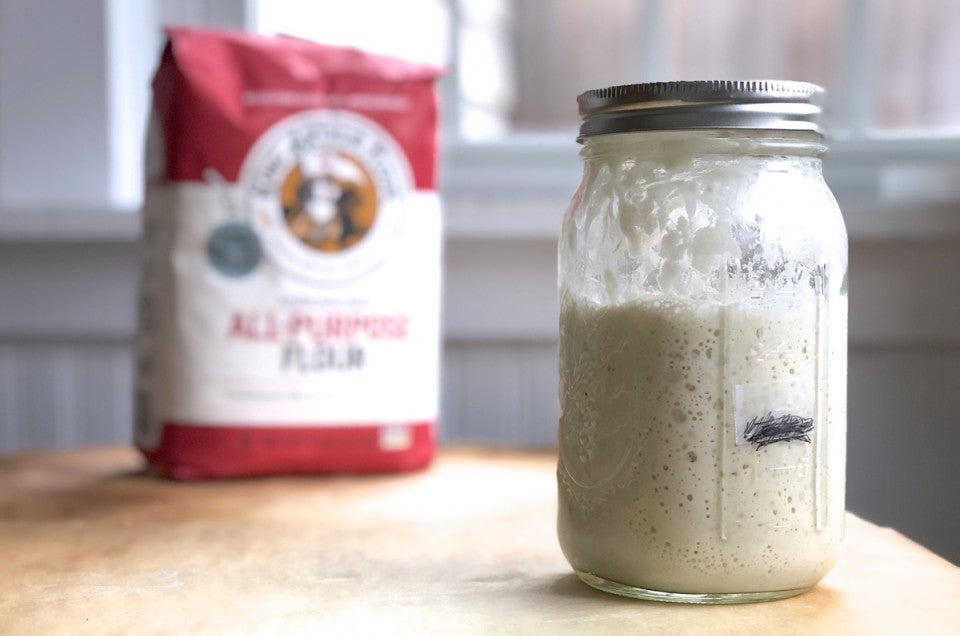


How's your sourdough starter doing? Fresh sourdough starter is a wonderful resource. Bread, pancakes, waffles, cake... there are so many delicious directions you can take with sourdough. The key: maintaining your sourdough starter so that it's healthy, happy, and ready to go when you are.
Once you've successfully created your starter, you'll need to feed it regularly.
If you bake a lot of sourdough treats, you may want to keep it on your counter, at room temperature. While this means feeding it twice a day, it also means your starter will be ready to bake with at the drop of a hat (er, oven mitt).
However, many of us don't want the commitment of twice-a-day feedings. If you're a more casual sourdough baker, it's possible to store your starter in the refrigerator, feeding it just once a week.
Let's take a look at both methods.
But first, a word of advice. Sourdough baking is as much art as science. This method for maintaining sourdough starter is just one of many you might choose to follow. It might not exactly match what you read in your favorite online bread forum, or what your neighbor down the street does.
And that's OK. If you have a process you've successfully followed before, then hey, stick with it. Or try this one and compare. All good.
Room temperature is the best environment for the yeast and lactobacilli that inhabit your starter, and you can learn a lot about your starter by observing a twice-a-day feeding regimen with the starter at room temperature.
If you're willing to maintain your starter at room temperature by feeding it twice a day, here's how.
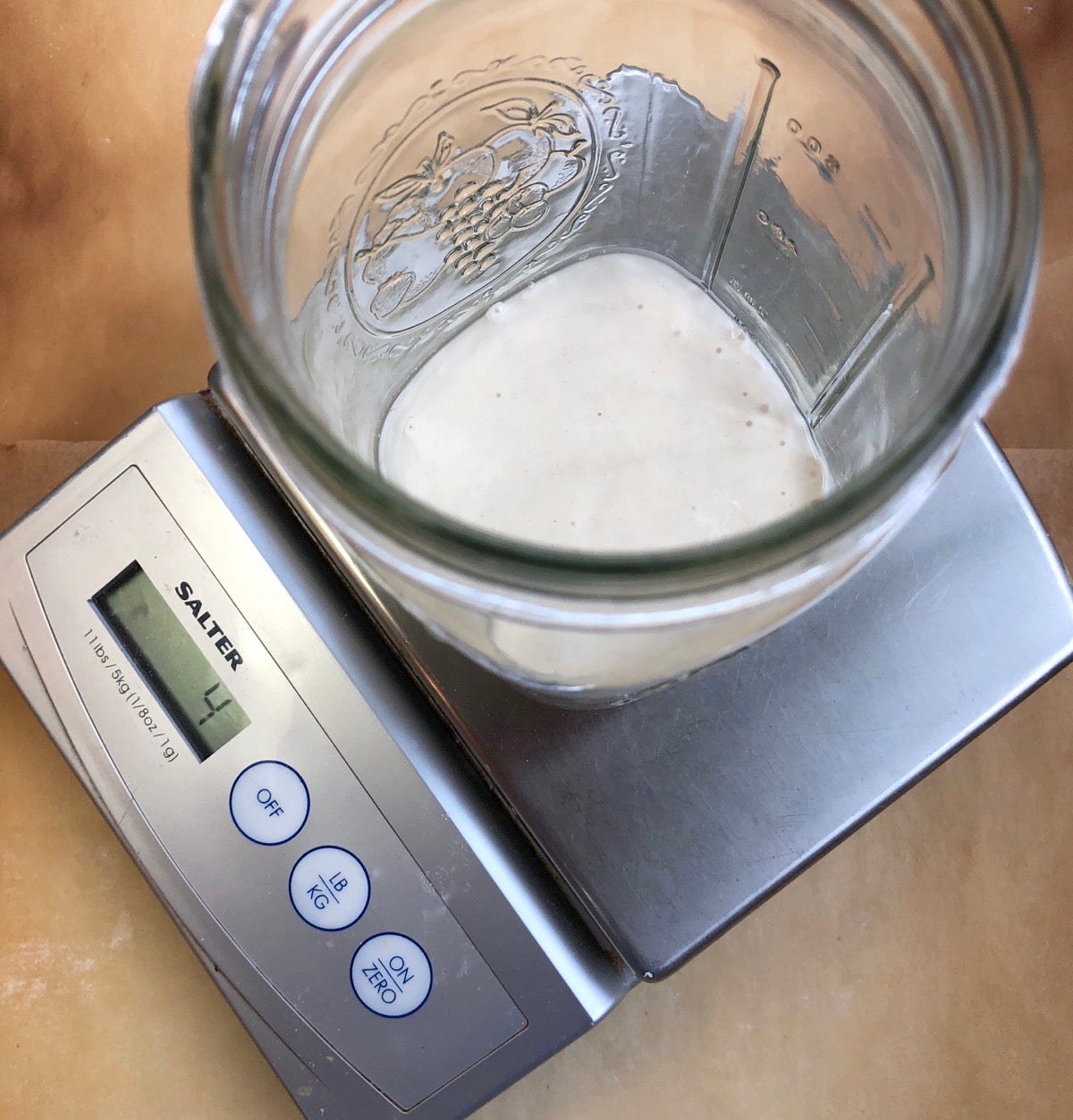
Stir the starter well and discard all but 1/2 cup (4 ounces, 113g).
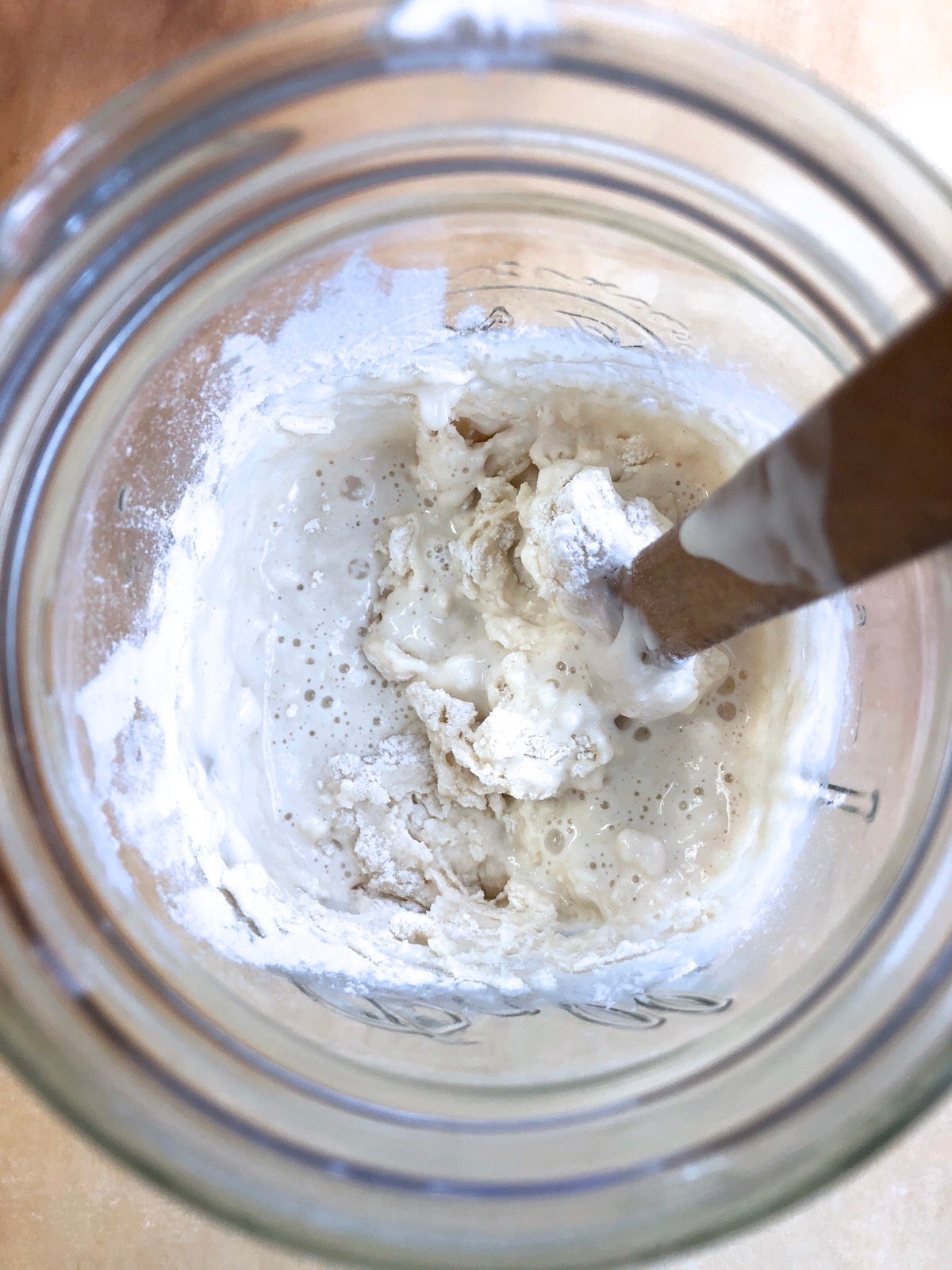
Add about 1/2 cup (4 ounces, 113g) room-temperature water (hereafter known simply as "water") and a scant 1 cup (4 ounce, 113g) King Arthur Unbleached All-Purpose Flour (hereafter known simply as "flour") to the 1/2 cup of starter.
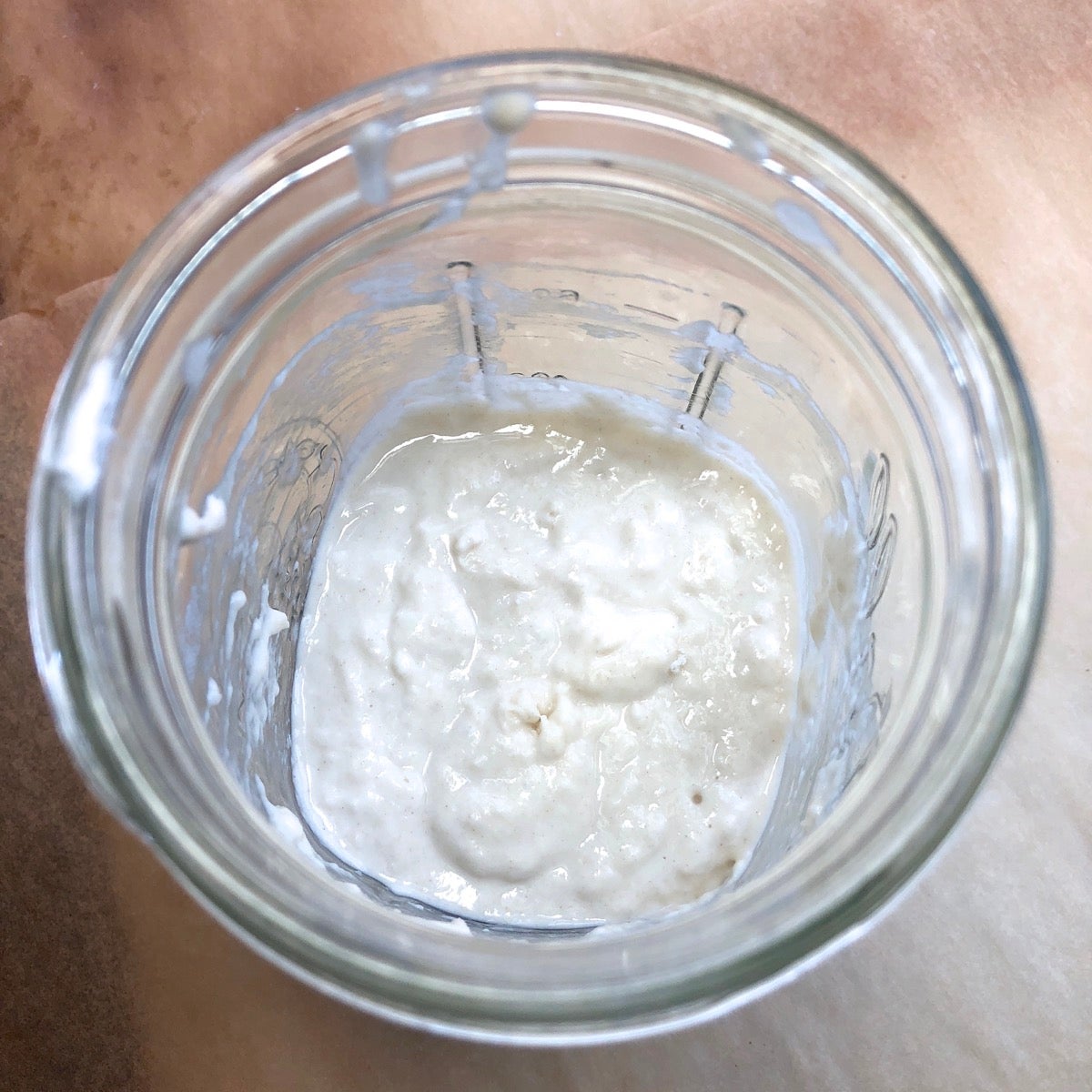
Mix until smooth, and cover.
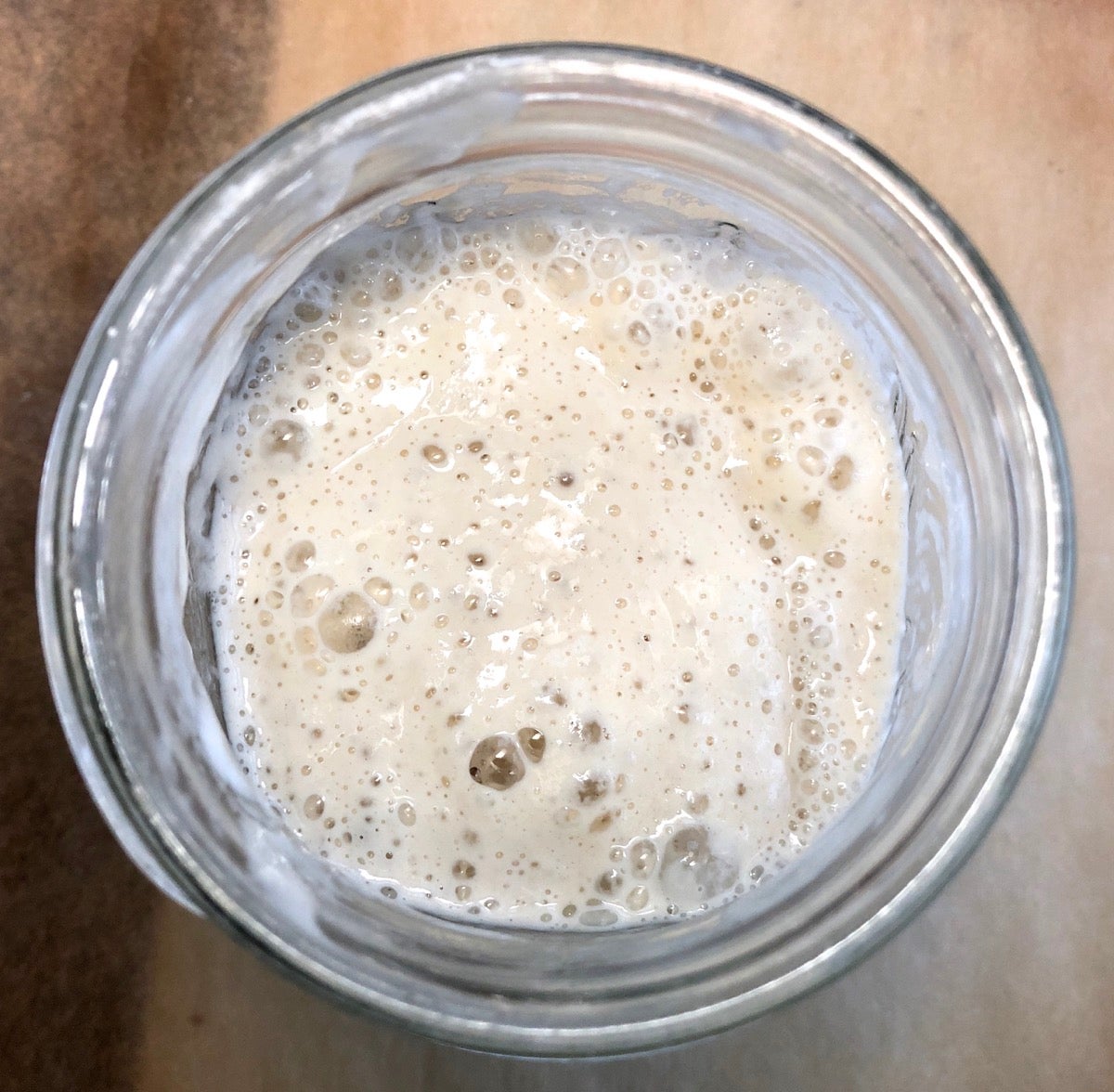
Your starter will bubble and grow until it's doubled (or more) in size...
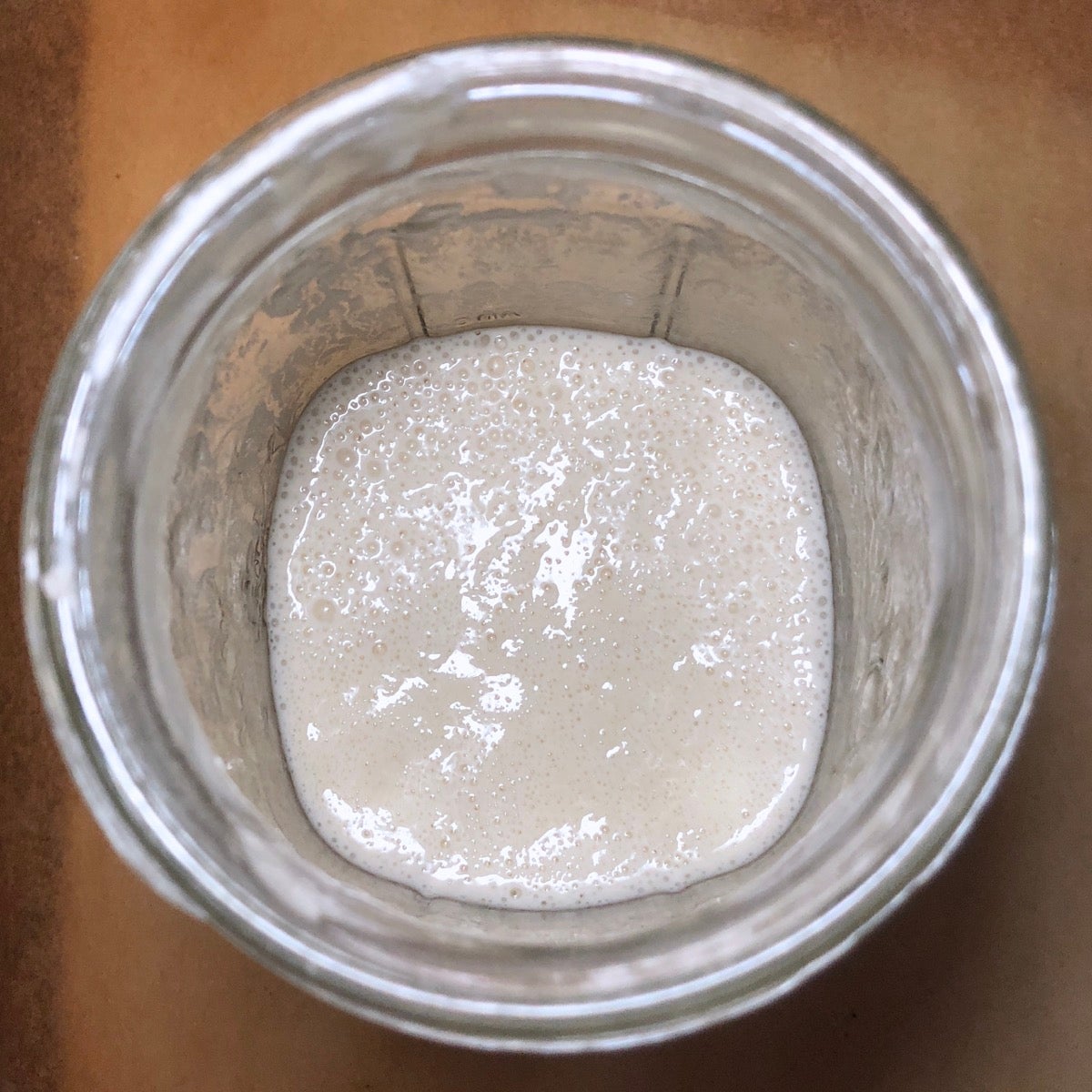
...then will gradually sink as it awaits its next feeding. Repeat this feeding process every 12 hours.
This whole process will take anywhere from a couple of hours to all day, depending on the health of your starter and the temperature of your house: the colder the environment, the more slowly your starter will grow. If the normal temperature in your home is below 68°F, we suggest finding a smaller, warmer spot to develop your starter.
The ideal solution is a folding bread proofer, which can be programmed to exactly 70°F, sourdough starter's favorite temperature.
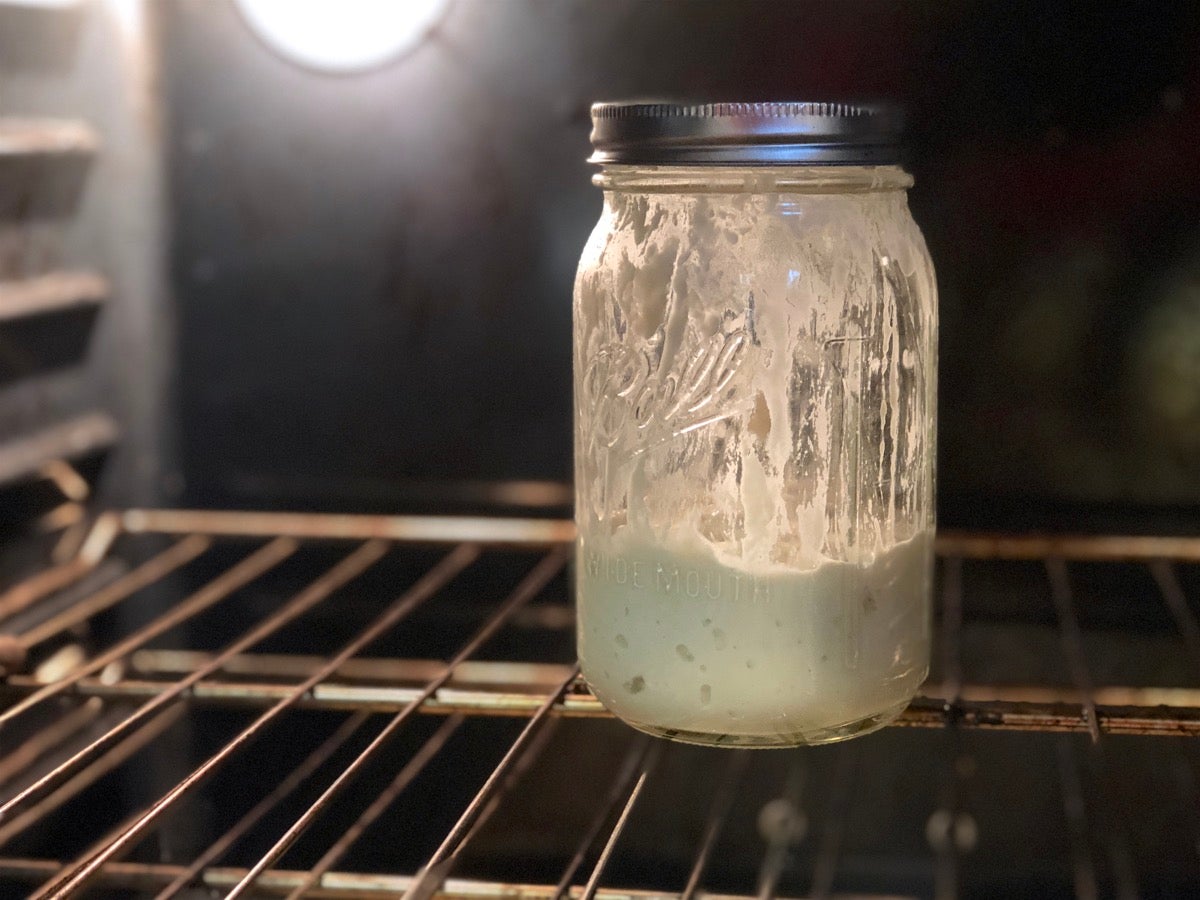
Absent that, I like to set starter in my cold oven with just the oven light on. Over time, the light will raise the oven's temperature to 90°F. Since I don't want it quite that hot, I'll turn the light off after an hour or so —however long it takes to reach 70°F — then turn it back on again if necessary.

Caveat emptor: If your starter's resting in the oven, put a reminder over your oven controls lest you inadvertently start preheating it with the starter inside! Been there, done that...
Other options: Set your container of starter atop your water heater, refrigerator, or another appliance that might generate ambient heat, or near a heat source (baseboard heater, etc.). Or place it on a folded dish towel laid atop a heating pad on its lowest setting.
For most home bakers, daily feeding is impractical; so you'll need to store your starter in the refrigerator and feed it once a week.
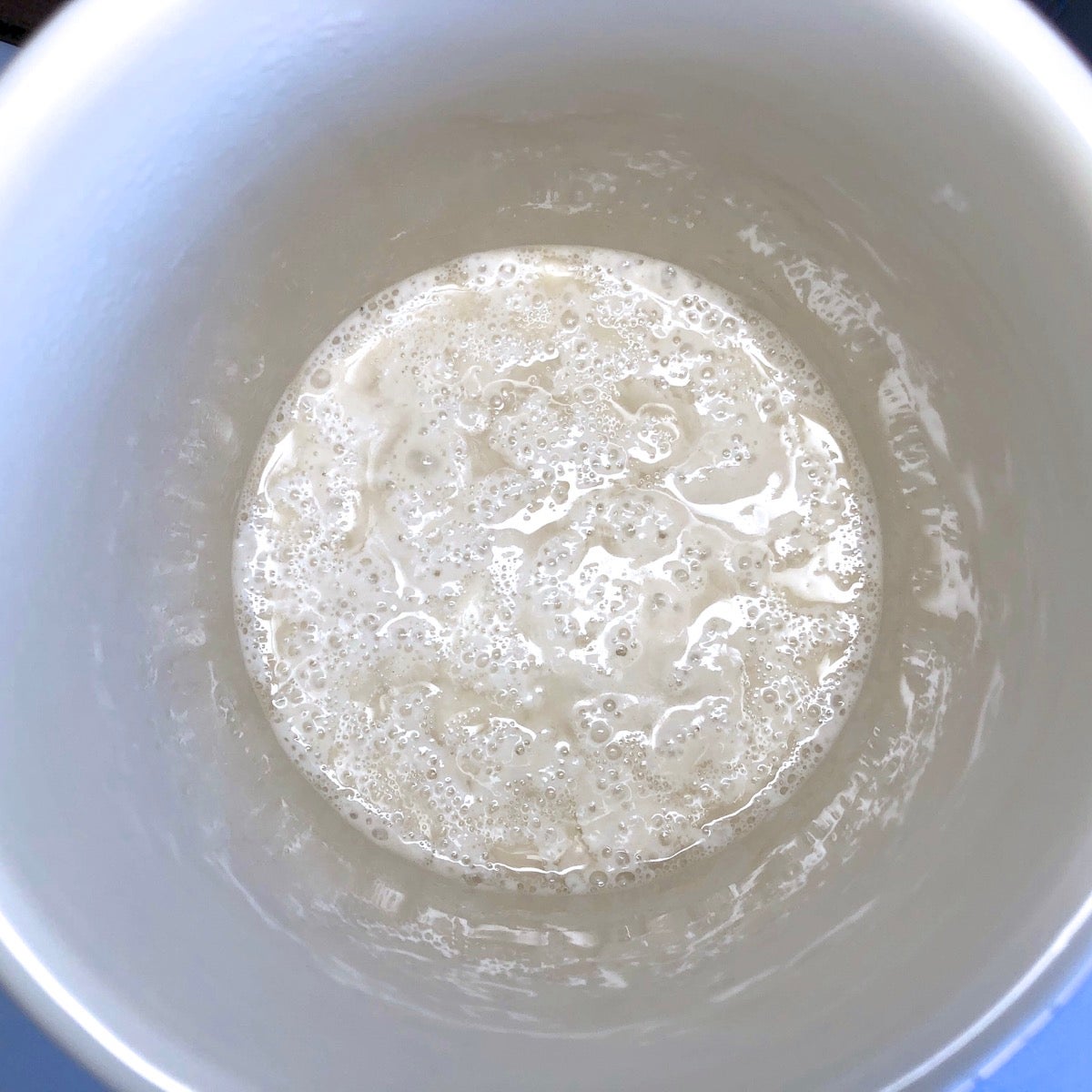
Take the starter out of the fridge. If you're feeding it weekly, it will probably appear a bit frothy. There may be a bit of light amber or clear liquid on top. Either drain this off or stir it in, your choice; it's alcohol from the fermenting yeast.
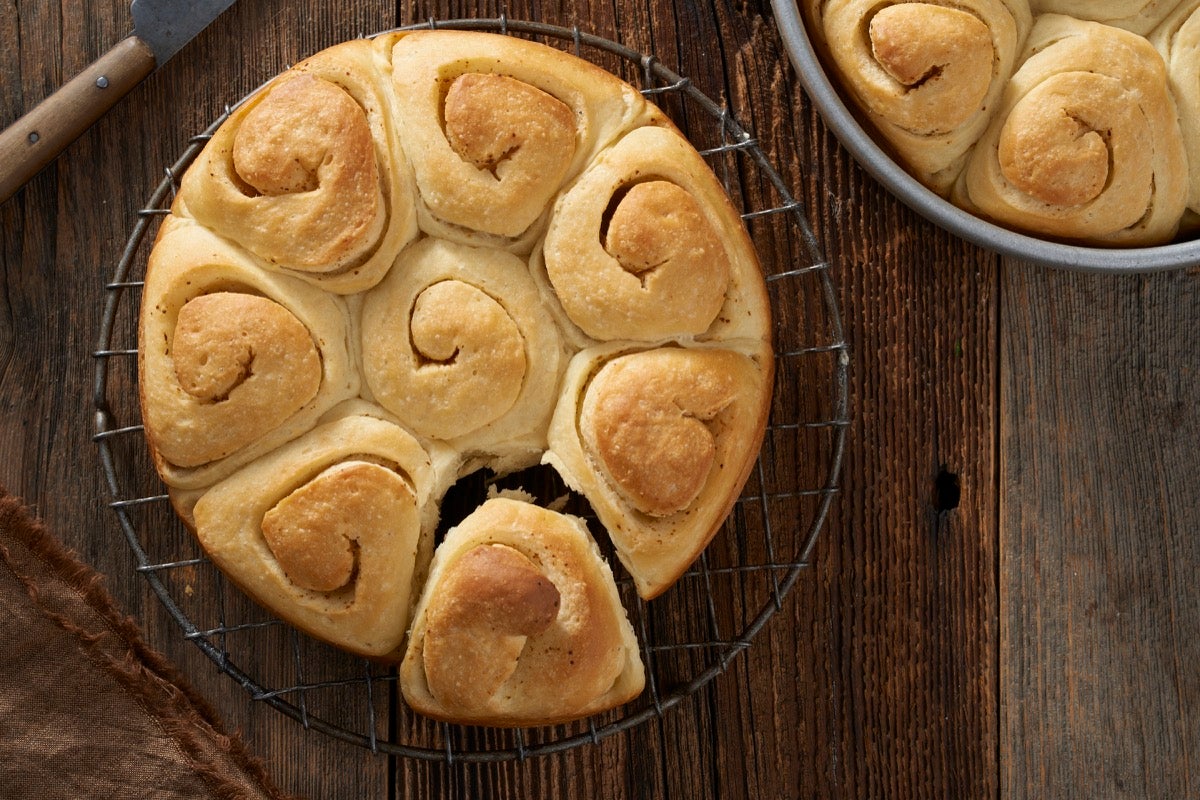
Remove all but 4 ounces (113g) starter. Use this “discard” to make pancakes, waffles, cake, pizza, flatbread, or another treat.
Or, simply give to a friend so they can create their own starter.
Add 4 ounces (113g) room-temperature water and 4 ounces (113g) flour to the remaining starter. Mix until smooth, and cover.
Allow the starter to rest at room temperature (preferably about 70°F) for 2 to 4 hours, until it shows signs of life; this gives the yeast a chance to warm up and get feeding. Once it's started to bubble, refrigerate it.
If your starter has been refrigerated, you’ll want to raise its activity to a more energetic level. You can do this by giving it a series of feedings at room temperature, anywhere from a couple over the course of a day to two feedings a day for several days, depending on how healthy it is.
Take the starter out of the fridge, discard all but 4 ounces (113g), and feed it as usual with 4 ounces (113g) water and 4 ounces (113g) flour. Let it rest at room temperature for about 8 to 12 hours, until bubbly.
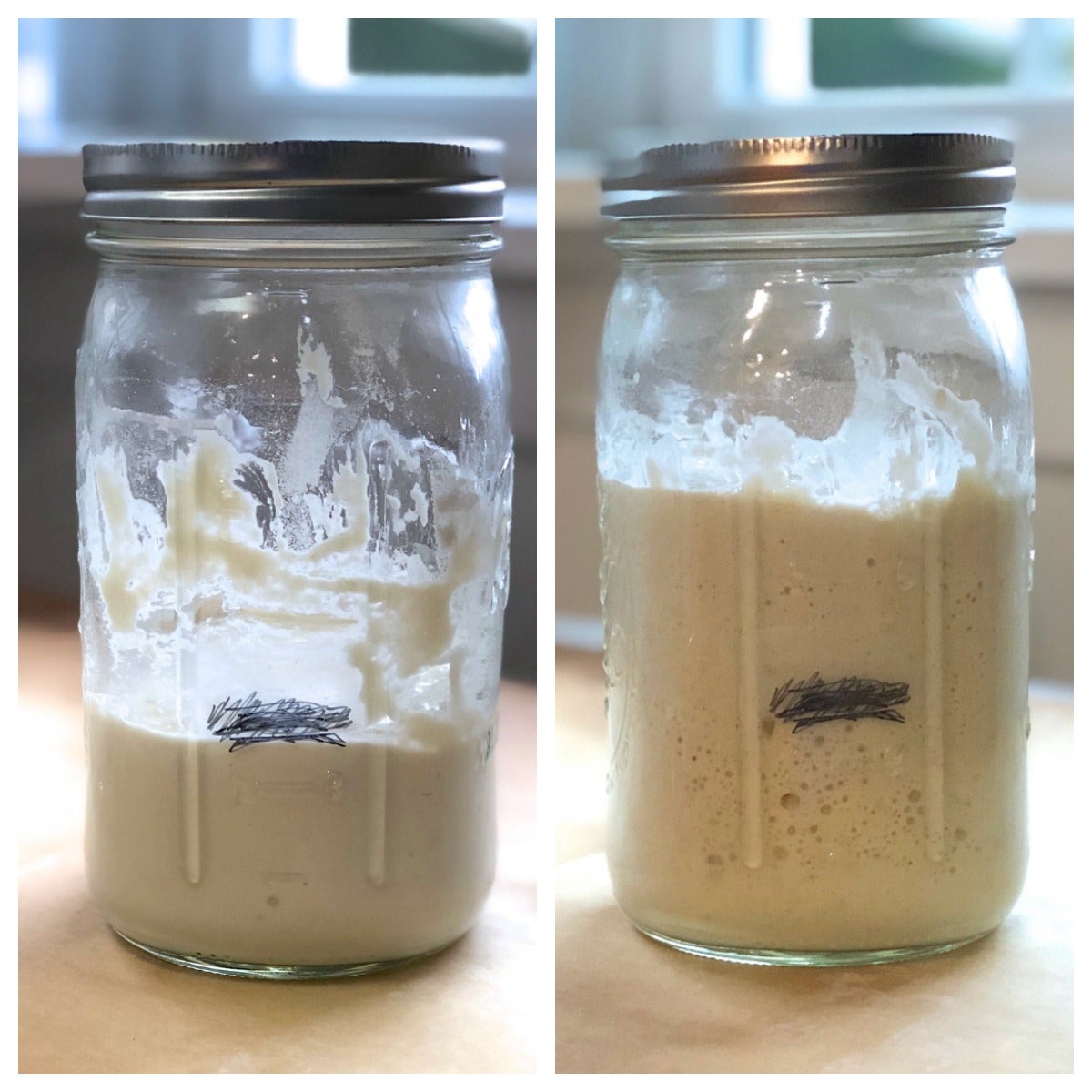
Repeat as necessary, every 12 hours, until you notice the starter doubling or tripling in volume in 6 to 8 hours. That means it’s strong enough to leaven bread.
For the final feeding, make sure you add enough flour and water to use in your recipe, with a little left over to feed and maintain the starter for the next time you bake.
For instance, if your recipe calls for 1 cup (about 8 ounces, 227g) starter, add 4 ounces (113g) each water and flour. If your recipe calls for 2 cups (about 16 ounces, 454g) starter, add 8 ounces (227g) each water and flour.
Once the starter is bubbling and vigorous, remove what you’ll need for the recipe and set it aside. Feed the remaining starter with 4 ounces (113g) flour and 4 ounces (113g) water. Mix until smooth, and allow the starter to work for about 2 to 4 hours at room temperature, until it shows signs of life, before putting it back in the refrigerator.
Feed with half whole-rye (pumpernickel) flour or whole wheat flour for a few days. The extra nutrition in the bran and germ can increase the starter’s acidity.
Be sure your starter has a chance to ripen (develop) fully before it receives another feeding; before you use it in a recipe, or before refrigerating it. An ideal feeding regimen for a starter kept at room temperature (in the low 70s) is two feedings a day at 12-hour intervals.
You may be letting the starter ripen too long before using it. Once your starter is bubbling and vigorous, it’s time to make bread, feed it again, or refrigerate until its next feeding. Don't let it become bubbly, rise, and then fall and start to "calm down;" that's adding acidity to its flavor. Reduce the duration of ripening as necessary.
Also, try ripening your starter in a slightly cooler area, so it doesn’t digest its meal of flour and water too quickly.
Sometime you may find yourself with a starter that’s gone far too long without a feeding. Covered in a clear, dark liquid (alcohol, a by-product of yeast that's been deprived of oxygen), the starter will lack bubbles or other signs of activity, and will have a very sharp aroma.
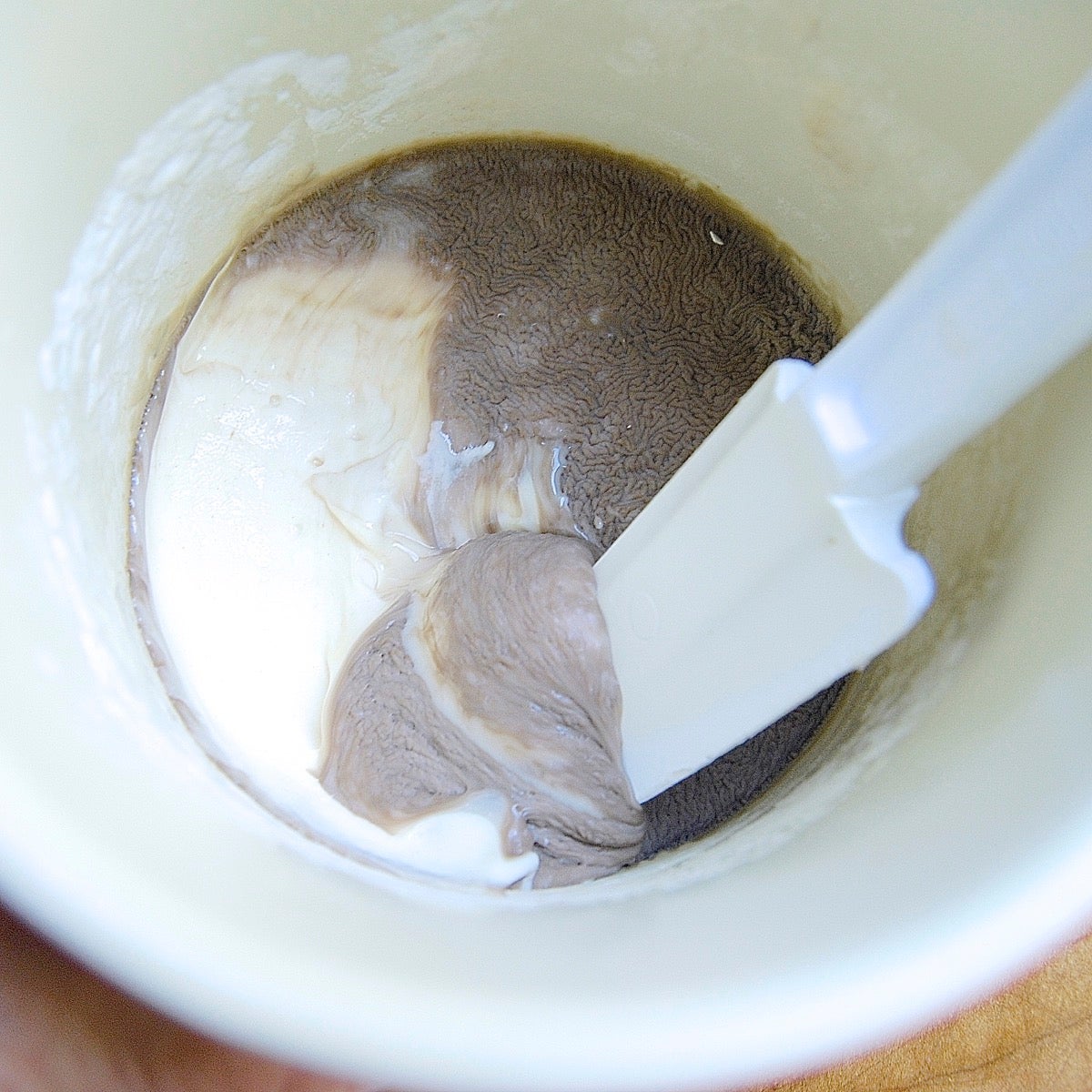
The starter may even have dry skin on top, usually gray or brown in color. Skim off and discard the skin; it's not harmful, but will discolor your starter. Although at this point the starter appears lifeless, its microflora will spring into action again as soon as they get a few good meals.
Stir the liquid back into the starter. Discard all but 4 ounces (113g), and set the bowl or crock on the counter; you’re going to be leaving it at room temperature (at least 70°F) for awhile.
Feed the starter 1/2 cup (4 ounces, 113g) water and a scant 1 cup (4 ounces, 113g) all-purpose flour twice a day, discarding all but 1/2 cup (4 ounces, 113g) of the starter before each feeding.
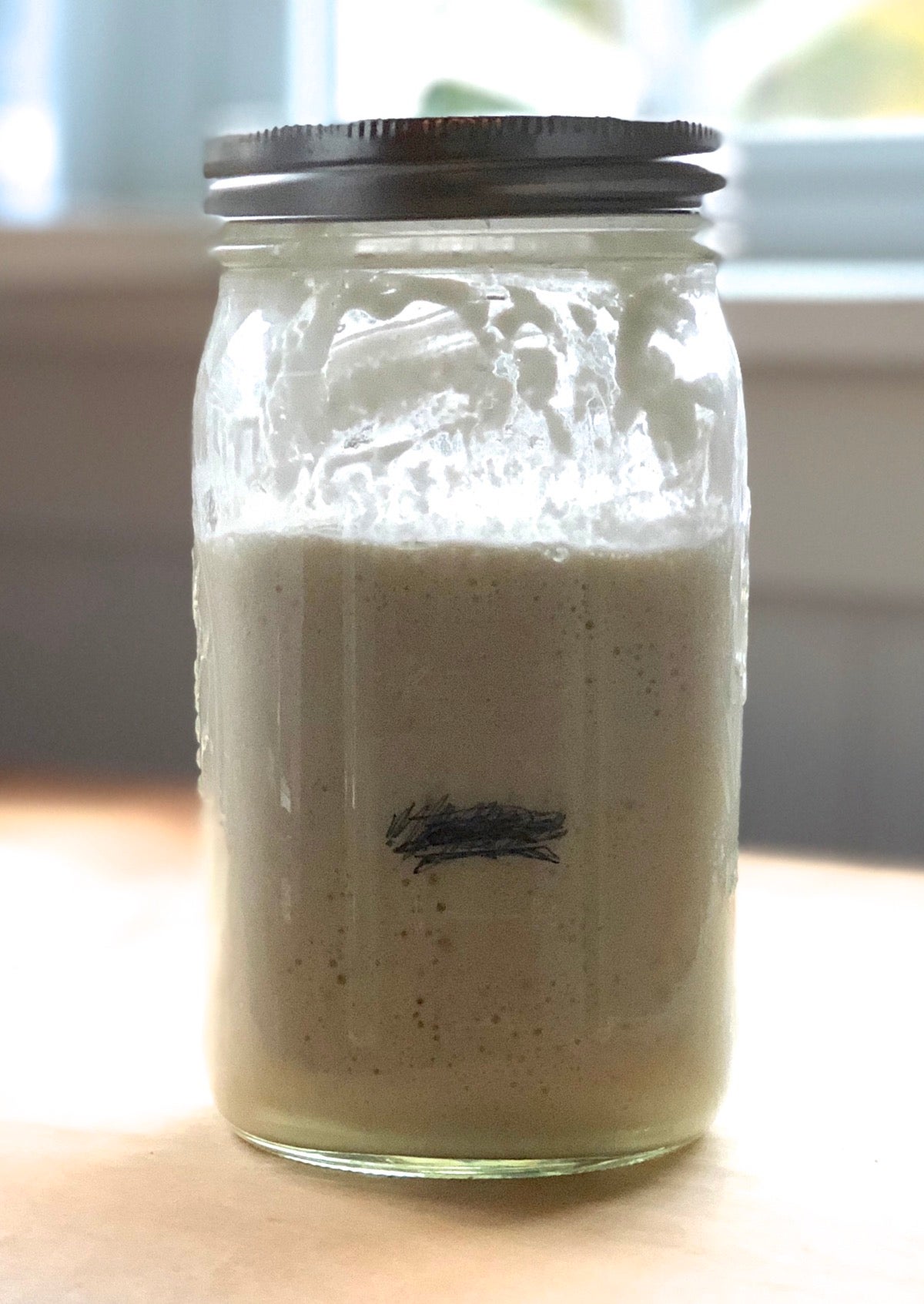
It should soon become healthy, bubbly, and active.
Sourdough starters are hearty, and easily resist spoilage due to their acidic nature. The pH of a sourdough starter discourages the proliferation of harmful microorganisms.
However, living creatures sometimes get sick, be they humans, pets, or even sourdough starter. If your starter turns ominously pink, orange, or red; shows signs of mold growth, or smells decidedly putrid, throw it away and begin again. Luckily, in our experience, this rarely happens. But for more information see our post, Sourdough starter troubleshooting.
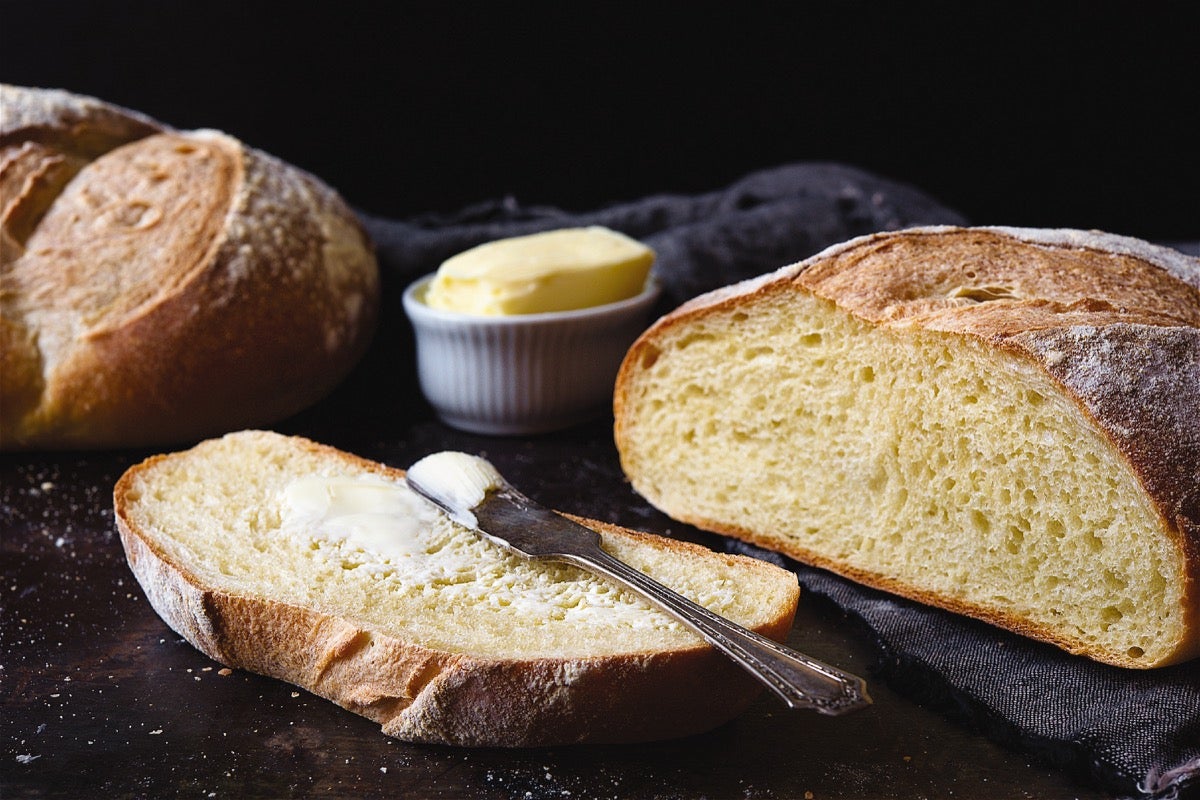
OK, after all of that — how about baking some sourdough bread? Our Rustic Sourdough Bread is a great place to start.
Or for "true" sourdough, without any added yeast, try our Naturally Leavened Sourdough Bread.
Want to make your own homemade starter from scratch? Read our post on creating your own sourdough starter. And for easy access to just about everything we've learned about sourdough baking here at King Arthur Flour (and are eager to share with you), see our sourdough baking guide.
January 22, 2022 at 3:06pm
Is there an easier way to feed the starter and not dirty so many dishes? Steps I am taking - remove 113 gr of starter into a bowl on scale. Pour out whats left in crock into another container (discard). Rinse crock as it's very smeary on sides from both pours. Dry crock. Pour the 113 gr back into crock, add weighed water and flour to that. Seems like a lot of stuff gets dirty...is there an easier way?
January 23, 2022 at 11:33am
In reply to Is there an easier way to… by Abby (not verified)
There certainly are less dish-intensive processes you can take in your sourdough feeding. My favorite way to do this is to zero out the scale with 339g of sourdough starter on it. Then, remove 226g of sourdough starter and placing it in a discardso that the scale reads "-226g". This way, you know that the remaining amount in the starter is 113g. Then, you can feed this remainder with 113g of water and flour. As long as you scrape down the sides of the container, you don't need to wash the container the starter is in each time. Still, I would recommend removing the starter and washing the container at least once a month. I hope this helps!
January 21, 2022 at 9:15pm
Hi,
What is the moisture percentage of your sourdough?
January 23, 2022 at 4:33pm
In reply to Hi, What is the moisture… by Marya Thompson (not verified)
Hi Marya! The sourdough starter in this recipe is considered to be at 100% hydration which is equal parts by weight water and flour. Happy baking!
January 14, 2022 at 2:48pm
If I only have a little (4oz.) or less of starter in my fridge, how much do I feed it to get 16 oz. of starter for a double recipe of bread?
January 15, 2022 at 2:54pm
In reply to If I only have a little (4oz… by Janet (not verified)
Hi Janet, there are different ways you can go about this, depending on how active your starter is. If you feed your starter quite regularly, you could try just giving it a larger feeding as follows: 4 ounces/113g (1/2 cup) starter the 8 ounces/226g (1 cup) water and 8 ounces/226g (2 scant cups) unbleached all purpose flour. It won't hurt your starter at all to feed it in this way, however it will take a bit longer for it to ripen.
On the other hand, if your starter has been neglected in the refrigerator for an extended time and you're planning to make a recipe that is entirely naturally leavened (no added yeast) then you might want to offer your starter a few feedings at room temperature prior to baking your bread. These "revival" feedings can help restore your starter's normal activity level, and ensure a stronger rise. For this scenario you might want to feed your starter once or twice with the normal feeding routine: 4 ounces/113g starter + 4 ounces/113g water + 4 ounces/113g AP flour, allowing the starter to ripen fully between each feeding. When your starter is doubling within 6-8 hours, that's a good sign that it's ready to add to your bread recipe. However, you'll still need to increase the quantity of your starter, which you'll want to do during the last feeding before you plan to bake. It will work fine to use the same ratios of starter/water/flour that I recommended above to build your quantity of starter, just allow for a little more time for your starter to ripen. I often choose to feed my starter this way if I'm planning to let my starter rise overnight and bake the next morning, as this method of feeding buys you a little more time to sleep. This can be particularly helpful in the summer on a warm summer night, since there's more of a risk that your starter will rise and fall before you are ready to bake with it.
January 12, 2022 at 4:12pm
How can i get my starter ready for when I want to use it, instead of the other way around? Also w/out depleting the good stuff already in the jar.
Thanks!
January 15, 2022 at 10:29am
In reply to How can i get my starter… by Carolyn (not verified)
Hi Carolyn, you might want to consider maintaining a smaller starter, which allows your feedings to build towards baking day, with very little waste of "the good stuff" along the way.
December 15, 2021 at 9:03pm
I am beginning to revive a quarter cup of starter that has not been fed for about 2.5 weeks. I fed it and it is on the counter now. I am new at this. Reading the instructions, it says to feed a neglected starter twice daily and discard all but a quarter cup. Must i discard or can i just keep adding? I’d like to begin to get an amount sufficient for a recipe but if all i keep ending up with is a quarter cup, i never will. Thanks!
December 16, 2021 at 10:19am
In reply to I am beginning to revive a… by Pat (not verified)
Hi Pat,
Keep the starter small and do your discards while reviving the starter, and then when it's nice and healthy you can go ahead and increase the amount of flour and water you're feeding your starter to increase the size.
Pagination